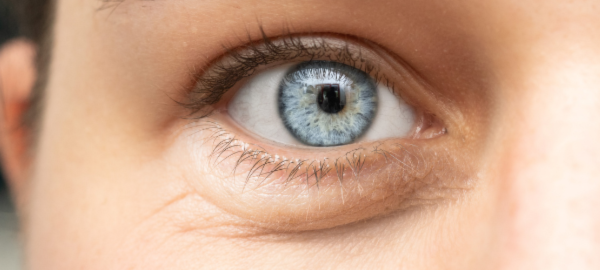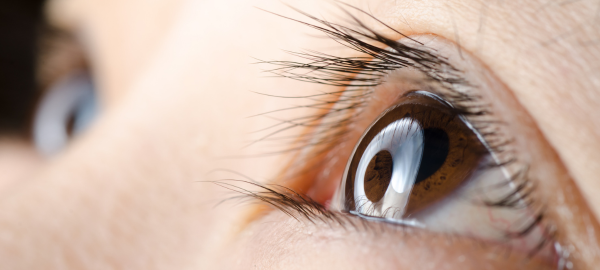Ask our dispensing optician
Your request was successfully submitted!
Meibomian Gland Dysfunction (MGD): Symptoms, Causes & Treatment

Reviewed by
Beck Jinnette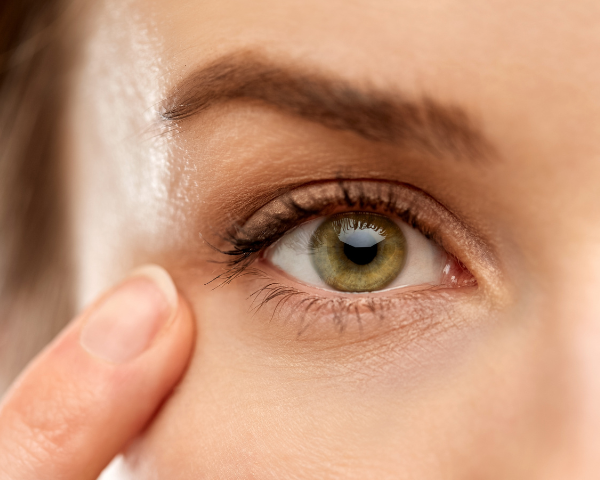
Our eyes are complex ecosystems that depend on a delicate balance of moisture, oil and a smooth ocular surface to maintain clear vision and comfort.
A key player in this balance is a set of small glands known as meibomian glands, which keep the eyes lubricated and healthy.
When these glands malfunction, they can lead to a condition known as Meibomian gland dysfunction, which can disrupt the eye’s tear film, resulting in real discomfort.
As one of the main causes of dry eye syndrome, Meibomian gland dysfunction is a common disorder that’s often overlooked.
In this article, we’ll explore its symptoms, causes and the various treatment options available to manage and treat this condition.
What are meibomian glands?
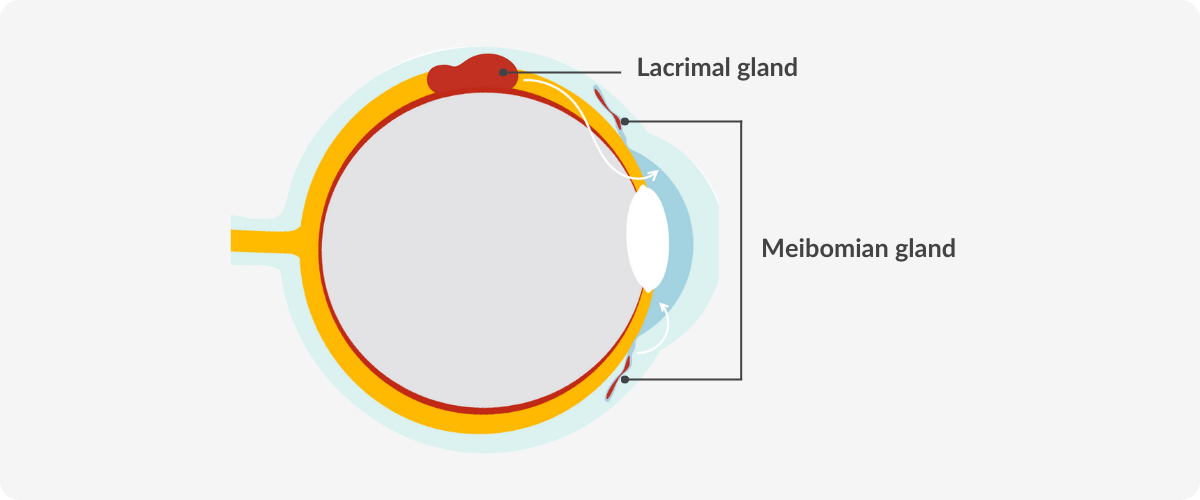
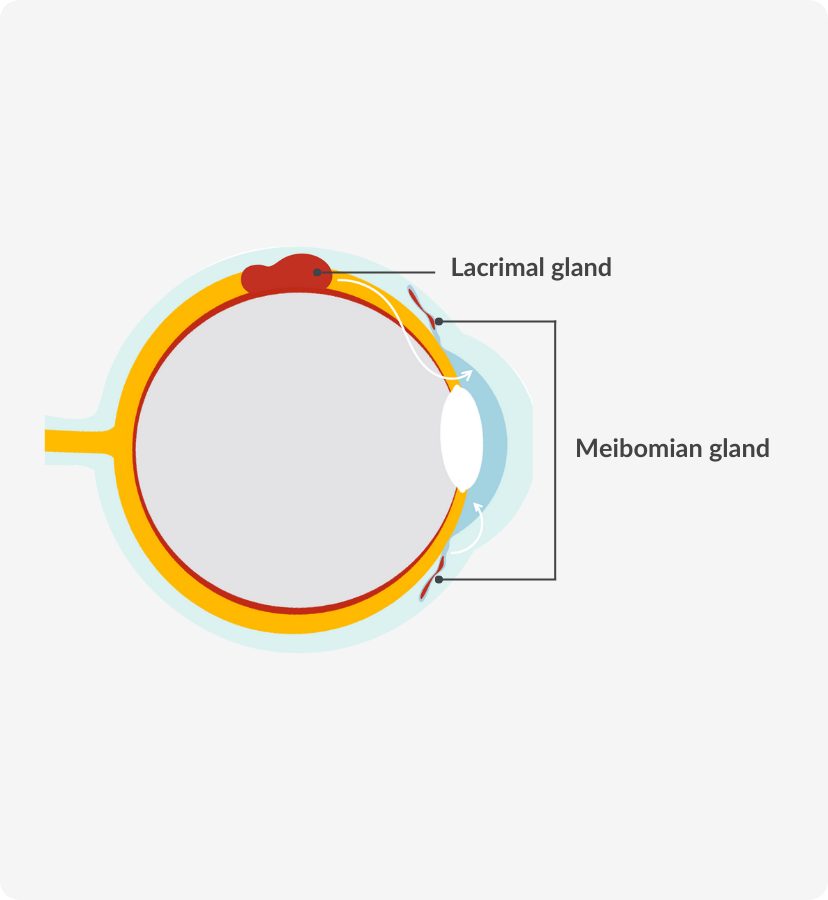
Human meibomian glands were named after the German doctor Heinrich Meibom, who first described them in the 17th century.
These tiny glands are embedded in both the upper eyelid and the lower one, strategically positioned along the eyelid margins.
Their main function is to secrete a lipid-rich substance called meibum, which forms the top layer of the tear film (a multi-layered fluid coating on the surface of the eye) and is essential in reducing tear evaporation (Chhadva et al. 2017).
This lipid layer is a complex mixture of oils, including phospholipids, cholesterol, free fatty acids and a variety of other lipids, which helps to create a smooth optical surface on the cornea, facilitating clear vision.
In healthy eyes, each blink spreads the meibum across the ocular surface, forming a protective barrier that stabilises the tear film and maintains ocular hydration.
This lipid barrier is not only crucial for comfort but also for protecting the eyes from microbial invasion and environmental irritants.
What is meibomian gland dysfunction?
Meibomian gland dysfunction is an ocular surface disease where the quality or quantity of human meibomian gland secretions is affected.
Specifically, it arises when the meibomian gland orifices become obstructed, when the glands do not secrete enough oil or the quality of the oil is altered.
Such dysfunctions can lead to compromised meibomian gland function, resulting in abnormalities in the tear film and adversely affecting the ocular surface.
This condition often manifests as discomfort and can lead to a range of vision problems, including irritation, blurry vision or the development of dry eye syndrome.
Different types of meibomian gland dysfunction
- Hyposecretory MGD: This type occurs when the meibomian glands do not produce enough oil or the oil they produce is of poor quality. As a result, the tear film lacks the necessary lipid layer to prevent evaporation, leading to symptoms of dry eye.
- Hypersecretory MGD: In this form, the meibomian glands produce an excessive amount of oil. This can lead to an unstable tear film and symptoms similar to dry eye, as excessive oil can disrupt the delicate balance of the tear film’s layers.
Additionally, MGD can also be classified based on the physical state of the meibum and the presence of any blockages in the glands:
- Obstructive MGD: This is the most common type, where the glands become blocked, typically by thickened oil or keratinised debris. This obstruction prevents the normal flow of oils into the tear film, leading to evaporative dry eye symptoms.
- Non-obstructive MGD: The glands are not physically blocked, but there may be issues with the quality or quantity of the oil being produced.
What are the symptoms of meibomian gland dysfunction?
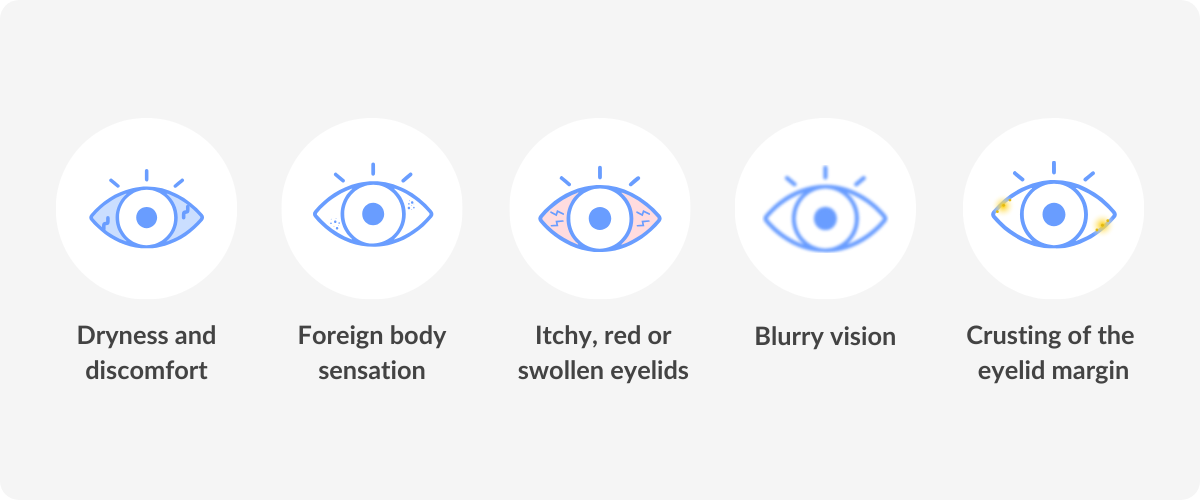
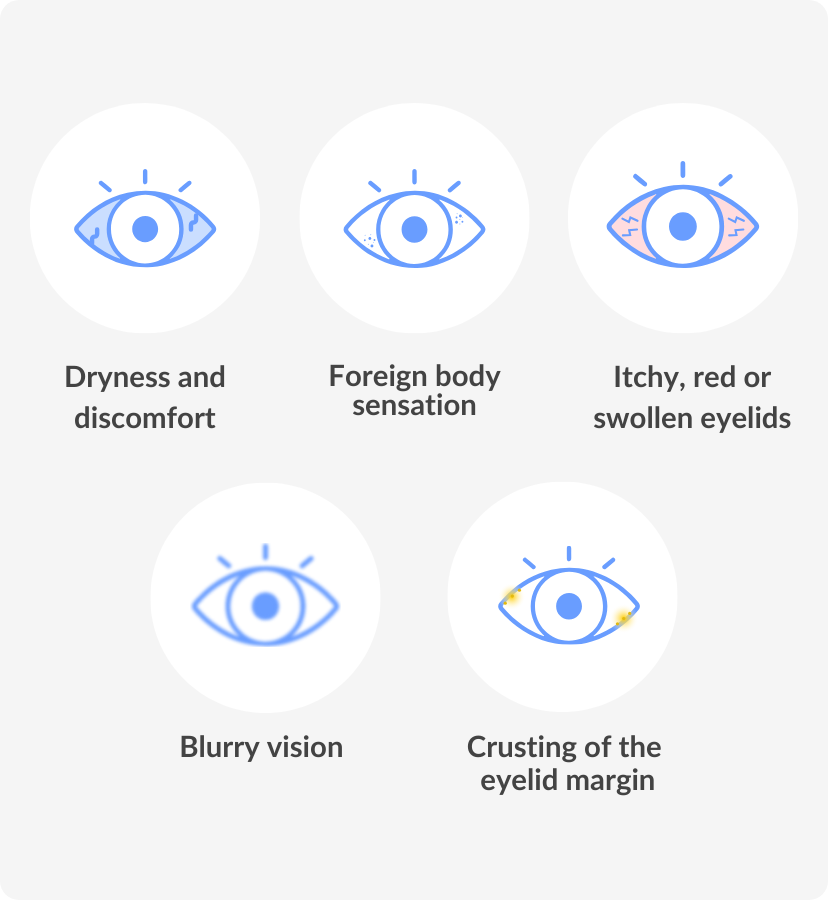
The symptoms of meibomian gland dysfunction may include:
- Dryness and discomfort in the eyes
- A gritty or foreign body sensation as if something is in the eye
- Itchy, red or swollen eyelids
- Fluctuating blurry vision that often improves with blinking
- Crusting of the eyelashes or eyelid margins, particularly noticeable upon waking
These manifestations are commonly associated with symptomatic meibomian gland dysfunction, emphasising the need for timely diagnosis and management to alleviate discomfort and preserve eye health.
What are the causes of meibomian gland dysfunction?


The root causes of meibomian gland dysfunction can be diverse, ranging from blockages of the oil gland openings due to thickened secretions or external factors that can alter the lipid layer of the tear film.
Some of the causes include:
- Ageing, as gland function tends to decrease with age
- Hormonal changes, especially during menopause
- High lipid levels in the blood
- Inflammatory skin conditions, like rosacea
- Allergic conjunctivitis
- Heavy make-up, as using eyeliner can block the meibomian glands
MGD risk factors
Certain factors may increase the risk of developing MGD, such as:
- Extended screen time, leading to reduced blinking frequency
- Environmental factors such as windy, dry or dusty conditions
- Wearing eye makeup, which can block gland openings


DID YOU KNOW?
Since the early 2000s, MGD has increased due to the daily use of technology and poor blinking rate.
How is meibomian gland dysfunction diagnosed?
Diagnosing MGD involves a comprehensive eye exam.
An eye care professional may use specialised equipment to examine the eyelids and the quality of the tear film and flow of the oil in the meibomian glands.
Non-invasive imaging techniques like meibography can also assess the structure of the glands.
How to manage and treat meibomian gland dysfunction
Management and treatment of MGD may include:
- Warm compresses: applying a warm compress to the eyelids (5 minutes daily) can help melt the thickened oil, allowing better flow from the glands.
- Eyelid hygiene: regular cleaning of the eyelid margin can reduce blockages and improve gland function.
- Medications: certain medications, including topical antibiotics or steroid eye drops, can help control inflammation. Although MGD is not an eyelid infection, antibiotics can help with the inflammation and bacteria that cause MGD.
- Nutritional supplements: omega-3 fatty acids can improve the quality of the gland’s secretions.
- In-office procedures: eye care professionals may perform procedures to manually express the glands or use devices to unclog the oil gland openings. An example is the innovative intense pulsed light (IPL) treatment.
- Punctal plugs: insertion of tiny devices in the tear ducts can slow the drainage of tears, keeping the eyes more lubricated.
- Avoiding aggravating factors: taking breaks during screen time and avoiding eye makeup can all help alleviate symptoms.
It is essential to consult with an eye care professional for a proper diagnosis and treatment plan if you suspect you have MGD.
Addressing the condition promptly can prevent further complications and improve quality of life.
References
Chhadva, P., Goldhardt, R., & Galor, A. (2017). Meibomian Gland Disease: The Role of Gland Dysfunction in Dry Eye Disease. Ophthalmology, 124(11S), S20–S26. https://doi.org/10.1016/j.ophtha.2017.05.031






































